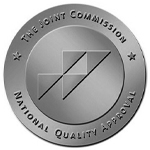
While most people have heard of Autism, there is still a lot of misinformation about the subject. Not all people affected by Autism have the same characteristics, and many people on the spectrum go on to lead productive, independent lives. However, identifying traits of Autism as early as possible is very important.
Kyle Ducey, Certified Registered Nurse Practitioner at Keystone Pediatrics in Chambersburg, sheds some light on the topic in today’s article.
What is Autism Spectrum Disorder?
Autism, or Autism Spectrum Disorder (ASD), refers to a developmental disorder with a wide range of characteristics with varying degrees of severity. The characteristics that define ASD are difficulty in social interaction/social reciprocity, difficulty with communication and restrictive or repetitive patterns of behavior or thoughts. There is not just one classic textbook presentation of Autism, but rather many different subtypes that are affected by a combination of genetic factors and environmental factors.
The characteristics that define ASD run on a spectrum of severity, giving each individual their own unique presentation of strengths and challenges. The ways an individual with ASD learns, thinks, problem-solves and socializes range from highly skilled to severely impaired. Some individuals require significant support to complete their daily activities, while others may need less support and may even eventually live independently.
Autism symptoms are treatable but not curable. Autism is five times more likely to occur in males than females. A diagnosis of ASD is made every 11 minutes in the United States, and 1 in 59 children will be diagnosed with Autism Spectrum Disorder.
Autism is often accompanied and sometimes complicated by conditions such as sensory sensitivity/processing difficulties, gastrointestinal disorders, seizures, sleep disorders, anxiety, ADHD and depression.
When do signs of ASD first appear?
In the United States the most common age at diagnosis is 4 years old. However, the American Academy of Pediatrics recommends screening for Autism at ages 18 months and 2 years at well child exams, using a verified screening tool. A diagnosis of Autism can typically be made by the age of 2 if identified early enough.
One of the most important ways to identify risk factors for Autism is to have your child seen by their health care provider regularly.
Why is it important to identify Autism as early as possible?
Identifying Autism early has been shown to be one of the key predictors of positive outcomes for individuals with Autism. Research has shown that intense early applied behavior analysis (ABA) therapy has shown the best improvement in the child’s core symptoms of Autism. ABA is based on the science of learning and behavior. ABA is considered an evidence-based “best” practice treatment by the US Surgeon General and by the American Psychological Association.
What are some of the common early signs of Autism?
Given that an individual’s outcome has been linked to early diagnosis and early treatment, it is important to know what some of the early signs of Autism may be which parents and providers need to be aware of. These include but are not limited to the following:
Communication
These signs can include:
- Delays in development of spoken language
- Repetitive language
- Lack of useful language
- Inability to initiate or maintain language
- Responding to a question by repeating the question rather than answering it
- Difficulty communicating needs or desires
Social Interactions
These signs can include:
- Displaying inappropriate verbal and/or non-verbal behavior
- Difficulty developing peer relationships
- Lack of social and emotional exchanges
- Preferring not to be touched, held or cuddled
- Trouble understanding feelings or talking about them
- Not sharing interests or achievements with others (such as drawings or toys)
Behavior Patterns
These signs can include:
- Restricted and/or repetitive patterns of behavior
- Difficulty in motor control
- Peculiar attachment to inanimate objects
- Distressed by a change in routine
- Lining up toys
- Head banging
- Rocking back and forth
What are some common signs of Autism in older children?
It is common for an individual with high academic functioning to receive a late diagnosis of Autism. Particularly in girls more than boys, due to girls more often being able to copy neuro-typical behaviors, including verbal and non-verbal communication which may mask their other symptoms of ASD.
Some of the signs an older child could have that may be concerning for Autism are the following:
Difficulty with social interaction and communication. These signs often include problems forming friendships, mistaking social cues or body language, misinterpreting conversations, finding it easier to form friendships online, displaying poor eye contact and expressing that they don’t fit in.
Inflexibility or rigidity of thoughts (‘black and white’ thinking).
Sensory processing difficulties. These often include experiencing sensory overload (finding the noise of school overwhelming), being unable to cope with lines or crowds, sensitivity to touch and having difficulty planning or organizing their work, bag or school day.
Emotional difficulties which often include low self-esteem, difficulty or reluctance to express or label their own emotions, levels of anxiety which seem excessive compared to the situation triggering them, low mood or depression and a desire to withdraw from the outside world.
Having any one of these symptoms by itself does not automatically indicate Autism Spectrum Disorder, but rather, as the name implies, it is a spectrum of multiple symptoms that when combined together can indicate a potential diagnosis of ASD.
What should you do if you are concerned about your child?
If parents are concerned about their child’s development, they should schedule an appointment with their primary care provider’s office to further discuss their concerns. One way that parents can be proactive with their child’s development is to bring their child in for routine physical exams and their provider can perform developmental screenings at that visit to monitor for any areas of concern. And if there is any concern, your provider can refer your child to the appropriate specialist for further evaluation and further intervention and treatment.
This article contains general information only and should not be used as a substitute for professional diagnosis, treatment or care by a qualified health care provider.




